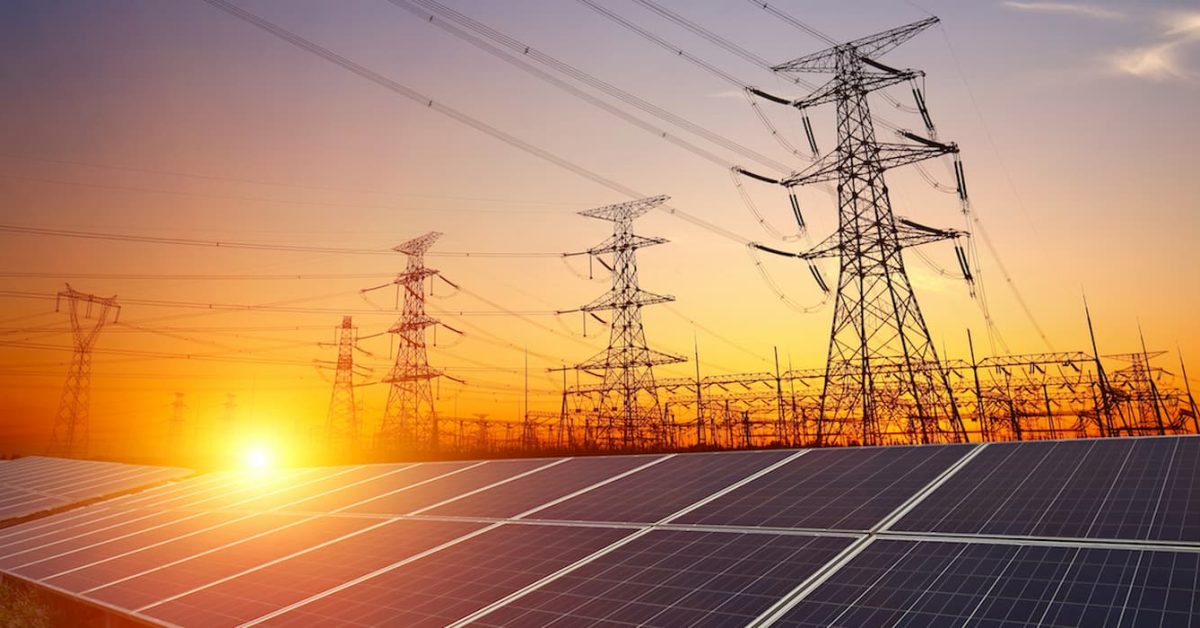Electrek spoke with former FERC commissioner and PG&E chair Nora Mead Brownell about how the US can quickly and efficiently upgrade its grid in order to get rapidly incoming wind and solar projects online faster. Here’s what she said.
Electrek: The grid is having its moment in the spotlight, but not for the right reasons. Why can’t power utilities handle the renewable energy transition?
Nora Mead Brownell: They can. But it will take some innovation. Most of the world’s transmission infrastructure was built between 40 and as much as 80 years ago, and much of it is operating well past age and design limits. Utilities currently don’t monitor their power lines for conditions that affect carrying capacity; like how much a line is sagging or swaying or ambient temperatures. In fact, 99% of power lines aren’t monitored at all, and that’s a problem.
Without that monitoring capability, utilities are making a “best-guess” as to how much power a transmission line can handle. By using assumptions that are typically “worst-case,” such as assuming extreme temperatures in July without respect to the cooling effect that wind has on a power line, utilities are only using a fraction of the true capacity of a given power line. That’s, in part, causing curtailment of renewable energy projects – and a long, often never-ending wait for renewable energy projects trying to interconnect to the grid.
Electrek: How does that delay get fixed? You mentioned innovation.
Nora Mead Brownell: In 2021, the Federal Energy Regulatory Commission (FERC) ruled unanimously to pass Order 881, which requires transmission providers to use a more accurate transmission line rating methodology called Ambient Adjusted Ratings (AAR). When fully implemented, AAR should help increase the capacity of those aging power lines and minimize the curtailment of wind and solar generation. But while Order 881 is a welcome start to modernizing the grid and increasing its carrying capacity, it’s really an incremental step, and one that’s almost three years away. It’s not enough.
Electrek: So what needs to happen?
Nora Mead Brownell: Well, we need to build more power lines. According to the US Department of Energy, we need to build about 47,000 miles of lines to meet the demand of the energy transition. But we’re dreaming if we think that’s going to happen in time to meet climate goals. Transmission lines are expensive, face considerable local opposition, and are next to impossible to permit.
If we’re to have any chance of decarbonizing the power grid before 2030, FERC needs to act again and require utilities to implement Dynamic Line Ratings. DLRs empower utilities with real-time data from advanced sensors that provide real-time field conditions that affect transmission capacity. Armed with this information, grid operators can safely go beyond – sometimes well beyond – the limits of traditional “guesstimates” to maximize grid capacity and get those wind and solar projects back online, and, hopefully, unlock some of what is now a 2-terawatt interconnection queue.
Electrek: Are utilities using DLRs now?
Nora Mead Brownell: Yes. In fact, National Grid just installed the largest DLR project in the US in upstate New York. And some of the largest utilities in the world are using it, like Xcel Energy, Dominion Energy, Avangrid, the Tennessee Valley Authority, and countless others. But given just how much wind and solar capacity the Inflation Reduction Act is poised to build, integration of the technology needs to happen much, much faster.
Electrek: So why isn’t it happening faster? What can people do to move the needle?
Nora Mead Brownell: The current economic model favors building new power lines – which, again, we need to do. But we need to better incentivize utilities to innovate with grid-enhancing technologies like DLR.
There’s currently a proposed FERC rule that would dramatically accelerate the use of the technology, and a variety of government agencies, like NYSERDA in New York, are incentivizing utilities to use DLR. In fact, New York State is arguably the leader in the expansion of its grid for renewables and the integration of the technology. National Grid, New York Power Authority, New York State Electric and Gas, and Rochester Gas & Electric are all installing DLRs provided by Boston-based LineVision’s non-contact LiDAR sensors.
People need to contact their local elected officials and demand action on this important issue.
Read more: Wind and solar are now beating coal in the US
Photo: Shutterstock
Nora M. Brownell is the cofounder of ESPY Energy Solutions and is on the advisory board for LineVision. She was nominated by President George W. Bush to the Federal Energy Regulatory Commission (FERC) where she served from 2001-2006, when her term expired. Brownell also served as a member of the Pennsylvania Public Utility Commission, and as the chair of the board of Pacific Gas & Electric (PG&E).
UnderstandSolar is a free service that links you to top-rated solar installers in your region for personalized solar estimates. Tesla now offers price matching, so it’s important to shop for the best quotes. Click here to learn more and get your quotes. — *ad.
Read the full article here




